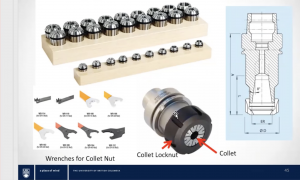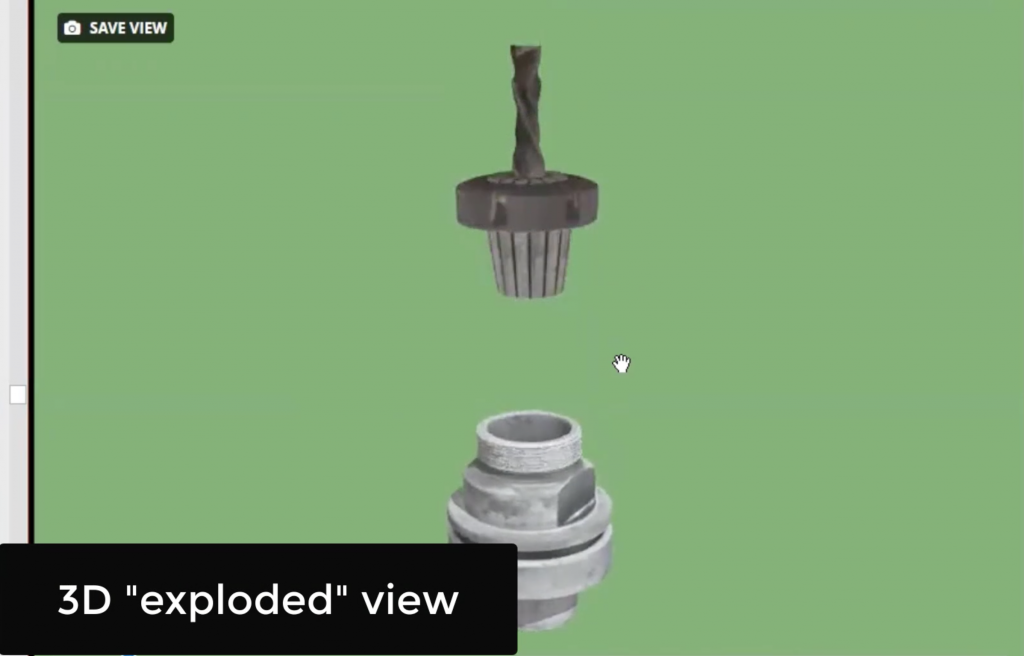A 3D model used in the courseHow are you using 3D models in your course?The class that I’m teaching now and we will use this video modeling is called WOOD 482, and in the name of the class is Cat Cam. What we using with the 3d model is basically, there’s a lot of tools that have been used on a CNC machine. And what I have asked UBC Studios to do is create some of the 3d models of the tools that involve using CNC machines so that students can see the shape or the model of different kinds of tools used in industry. Before we moved to online teaching. What I used to do is I will have the wheel tools available for the students. So during the class hour, I passed to those tools the students, explain to them what are some of the characteristics of the tools that they are looking for, etc. However, with moving to online teaching, we can only show pictures during the class. The pictures only have two dimensions. They will not be able to see the wheel object in 3d and the class I teach is important for the students to see what the tool looks like, therefore 3d models came in quite handy, so allow students to see things in three-dimensional form. Example of using in classUsing an HSK Chuck in the wheel class, we were able to hand out this exam to the students. Those people can take it apart, put it back together. They can’t get a feeling of what the wheel will look like online. With the 3D model, we use 3D exploded view, basically, it shows us how they can take the model apart and put it back together. So basically it tells the student what the assembly will look like in class. Also, the object can be rotated. We can move it around so that we can see from different angles how to put all the pieces of the object together. The animation can be paused to focus on a particular location of the object, to talk about that part in detail. How are you currently using the 3D Models in class?The models will be shown in class during the lecture. Also, the links with the 3d models will be shared with students so that they can also look at them at their own time after class. How do you plan to modify the 3D models?Parts of the model will be labeled to make it easier for the students to understand each component that is part of the wheel, so they can compare with the notes they have and make the link between the 3d model and what they have learned during the class. What suggestions do you have for instructors who are considering using 3D Models?If an instructor wants to consider using the 3D model in that class, I would suggest using some examples from your original class, for example, the object I am using for this demonstration, that you typically want to give to students to hold and explore the model themselves. Because of COVID, the instructor has to move the class to the online environment and will not be able to show the physical object, therefore, I think a 3D model will be the better option than just showing them the picture because the picture is only 2D. You can also show videos on Youtube, but the videos still, even though it’s moving during the time, you are not really able to rotate the object see all the way around, and show it in multiple angles to the students. Also, using the 3d model, you are able to add a ruler so students can see the model ratio. Another example is using a green background. The reason that we choose the green solid color background with the goal that the object stands out and does not cover the original color of the object, making it easier to showcase and show all the components in detail. Finally, it is important to own the objects’ copyright so we know that we are allowed to scan and distribute the scans to the students or for people or make a search for the object online. You can also combine the models scanned with quizzes in Canvas. The instructor can add the link of the model to the quiz without the name of the object of any label that identifies its components, so students can explain some characteristics of what they see. |
|
|

